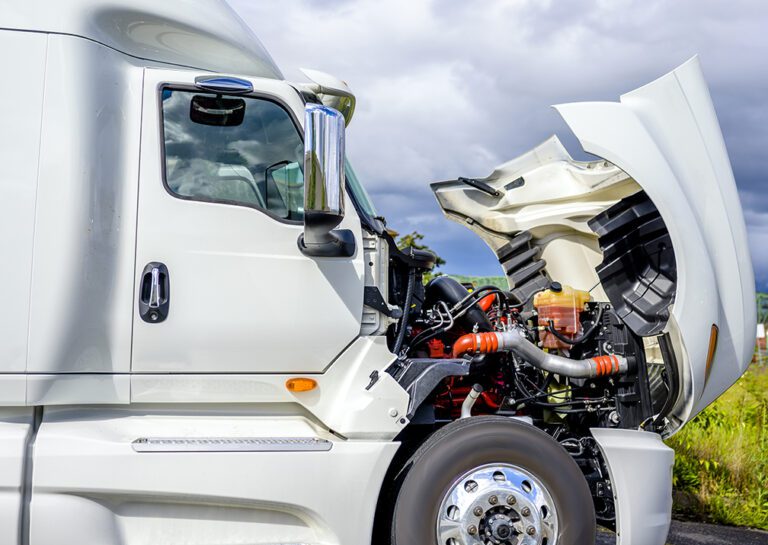Truck buyers have a lot of factors to consider before making a final decision. In addition to features like the cab, bunk size and other things on the checklist, it’s important to check out what’s under the hood.
“There’s no replacement for displacement.” This is a term that’s been around since the early days of the internal combustion engine. Big engines mean faster times at the drag strip. They put the muscle in “muscle car.”
In trucking, bigger engines mean less driving time for each trip, faster acceleration to highway speed on entrance ramps, and the ability to tackle inclines without slowing to walking speed with an overheating engine. Drivers wanted more horsepower, and carriers learned that driver recruiting was a little easier when company trucks weren’t the slowest on the road.
However, that power came at a cost. Fuel consumption increased with displacement. Increased fuel usage meant increased pollutants from the exhaust stack. Since larger engines required more steel, there was an increased a cost in weight, too.
As the Environmental Protection Agency (EPA), the California Air Resources Board (CARB) and others pushed for lowered emissions, manufacturers were pressed to find ways to comply.
Lowering fuel consumption is one way to lower emissions and changes in vehicle design to improve aerodynamics occurred rapidly. So, changes were made to engines. Electronics tweaked injection timing and other engine functions to maximize fuel efficiency. Exhaust gas recirculation (EGR) was introduced. Mufflers became particulate filters. Selective catalytic reduction (SCR) was introduced. Drivers became accustomed to diesel exhaust fluid (DEF), a term that in past years would have been a joke on the level of blinker fluid or muffler bearings.
Fuel economy rose. Emissions fell to a point where, in some large metro areas, the air from a truck’s exhaust was actually cleaner than the air being pulled into the engine.
A breaking point was reached. Industry experts realized they would soon reach a point where they were getting all they could from the 15-liter engine that was most popular with buyers. The dilemma was in how engine size — displacement — could be reduced without sacrificing power. Advances in technology made it possible to produce adequate power in the 13-liter diesel engine and truck manufacturers made them standard. The demands for better fuel efficiency and lower emissions continued.
Today, many trucks leave the assembly line with 11-liter engines. Buyers of used trucks face a difficult decision about engine size. Fifteen-liter engines have more power and, according to some, last longer because they aren’t taxed to the limit during regular use. The concern is that smaller engines must work harder to produce the same power, shortening their life span.
The newest 11-liter engines are built with historically small tolerances between moving parts, and thinner engine oils are needed to form protective layers on these parts. However, thinner oils can’t absorb pollutants and engine heat to the same degree as thicker ones. In addition, they may be more expensive than thicker, more commonly used oils.
In general, many drivers consider 15-liter diesel engines more reliable — an important factor in keeping maintenance costs down. On the other hand, the increased fuel economy of smaller-displacement engines helps hold fuel costs down.
The answer to the question of which engine is best may be in the type of work the truck is expected to perform.
A truck pulling general freight in the Midwest, for example, won’t need as much hill-pulling power as one pulling oversize loads across the Rockies. A flatbed driver, a type of hauler that often doesn’t benefit from the aerodynamic products available for van trailers, may feel the need for more power, especially if cargo requires pickup or delivery at construction sites or other unpaved places off the road.
Freight with lower rates may demand maximum fuel efficiency, while rates for other freight may be high enough to cover extra fuel cost.
Personal preference is also a factor. Some drivers demand the proven reliability of larger engines, while others want the advanced technology found in the newer, smaller ones. Some operators want to minimize the carbon footprint of their businesses, while others are more concerned with driving time and the power to pull the highest-paying loads.
It won’t be long before there are more engine choices, including hydrogen, fuel cell electric and battery electric vehicles. For now, however, diesel rules.
As for reliability, most new trucks are now equipped 11- and 13-liter engines. They’re getting the job done, but carriers often trade trucks that end up on the used truck market at a half-million miles or more. Will the engines in those used trucks hold up until they reach a million miles or more, as 15-liter engines commonly do? That’s another question for used truck buyers to ponder.
Another consideration is resale value. The dollars saved with the increased fuel economy of a smaller engine may rapidly shrink if the owner has to accept less money when selling the truck.
Finally, the technological advances used for smaller engines are now being applied to 15-liter powerplants as well. With the right tweaks, 15-liter diesels can achieve fuel mileage comparable to smaller engines — or at least at an acceptable increase, in light of the benefits provided. Automated transmissions are standard on most truck models, helping maximize fuel efficiency.
Cliff Abbott is an experienced commercial vehicle driver and owner-operator who still holds a CDL in his home state of Alabama. In nearly 40 years in trucking, he’s been an instructor and trainer and has managed safety and recruiting operations for several carriers. Having never lost his love of the road, Cliff has written a book and hundreds of songs and has been writing for The Trucker for more than a decade.








